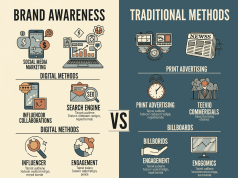Navigating the Martech Jungle: Choosing the Right Tools for Your Business
The marketing technology landscape, often referred to as "Martech," has exploded over the past decade. With thousands of tools available, each promising to enhance marketing efforts, businesses often find themselves lost in a dense jungle of options. To navigate this complex environment effectively, it’s crucial to understand your specific needs, evaluate available technologies, and make informed decisions. Here’s how to choose the right Martech tools for your business.
1. Identify Your Marketing Goals
Before diving into the sea of available tools, take a step back and clearly define your marketing objectives. Are you focused on lead generation, customer engagement, data analytics, or something else? Different tools serve different purposes, so having a set of clear goals will guide your selection process.
2. Assess Your Current Technology Stack
Understanding your current technology stack is essential. Identify existing tools that your team is already using and evaluate their effectiveness. This analysis can help you pinpoint gaps or redundancies in your marketing operations while ensuring that any new tools you consider complement and integrate well with your existing systems.
3. Determine Your Budget
Budget constraints can significantly influence your technology choices. Evaluate how much you are willing to invest in new tools and consider not just the purchase price, but also ongoing costs such as maintenance, training, and potential upgrades. It’s crucial to strike a balance between cost and functionality.
4. Research Available Options
With your goals in mind, begin researching available tools. Several categories of Martech tools may fit your needs:
- Customer Relationship Management (CRM): Tools like Salesforce, HubSpot, and Zoho help manage customer interactions and data throughout the customer lifecycle.
- Email Marketing: Platforms such as Mailchimp or ActiveCampaign allow for targeted email campaigns and automation.
- Social Media Management: Tools like Hootsuite or Buffer streamline posting and engagement across platforms.
- Analytics and Data Management: Google Analytics or Tableau help you measure the effectiveness of your marketing strategies.
5. Evaluate Integration Capabilities
Integration is a key factor in ensuring that your Martech tools work harmoniously. Look for tools that can easily connect with one another and with your existing systems. Effective integration can save time, reduce errors, and streamline workflows, leading to better marketing performance.
6. Consider User Experience
The user experience of the tools you select can significantly impact your team’s efficiency and adoption rate. Look for options that offer intuitive interfaces, robust customer support, and comprehensive training resources. A tool that is difficult to use may not be fully adopted by your team, undermining its potential benefits.
7. Request Demos and Trials
Most Martech vendors offer demos or free trials of their products. Take advantage of these opportunities to experience the tool firsthand. This will allow you to gauge how well it aligns with your needs and how easy it is for your team to use.
8. Read Customer Reviews and Case Studies
Before making a final decision, research customer reviews and case studies to understand how other businesses have benefited from the tools you are considering. This insight can provide valuable perspectives on the tool’s effectiveness, customer support, and overall reliability.
9. Keep Scalability in Mind
Your business is likely to grow and evolve, and your Martech stack should be able to grow with it. Consider whether the tools you are evaluating can scale according to your future needs. Flexibility and scalability are critical for long-term success.
10. Make Data-Driven Decisions
Finally, use data to drive your choices. Create a scoring system to evaluate each tool based on your established criteria. This systematic approach helps eliminate bias and ensures that your selection is backed by objective reasoning.
Conclusion
Navigating the Martech jungle doesn’t have to be overwhelming. By defining your goals, evaluating existing tools, researching options, and making data-driven decisions, you can find the right tools to set your marketing efforts up for success. As innovation in marketing technology continues at an unprecedented pace, staying informed and adaptable will be key to maintaining a competitive edge in your industry. Investing time and resources into the right Martech stack can lead to transformative results for your business, enhancing customer engagement, and ultimately driving growth.









